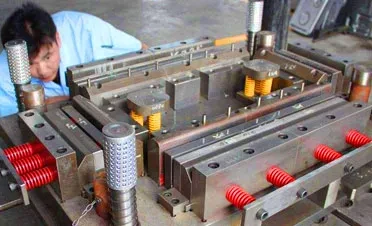Leading Supplier for High-Quality Gravity Die Casting Solutions in the Industry
The Importance of Gravity Die Casting in Modern Manufacturing
In the fast-evolving world of manufacturing, various techniques are employed to produce high-quality components efficiently. One such method that has gained significant traction is gravity die casting. This process is a popular choice among suppliers due to its precision, cost-effectiveness, and versatility, particularly in producing complex shapes and large quantities of cast parts.
What is Gravity Die Casting?
Gravity die casting, also known as permanent mold casting, involves pouring molten metal into a reusable mold under the force of gravity. Unlike sand casting, where molds are typically made from sand, gravity die casting utilizes molds made from metal, which allows for better thermal conductivity and a smoother finish. This method can be applied to a variety of materials, most commonly aluminum, zinc, and magnesium alloys.
Advantages of Gravity Die Casting
1. Precision and Detail One of the primary advantages of gravity die casting is its ability to produce intricate shapes with tight tolerances. The metal molds provide a high level of detail, resulting in high-precision parts that often require minimal machining. This accuracy is crucial in industries such as automotive and aerospace, where component failure can have severe consequences.
2. Surface Finish The quality of the surface finish obtained through gravity die casting is typically superior to that achieved in other casting methods. The reusable metal molds create a smoother surface, reducing the need for extensive post-production work, such as polishing or machining, thereby saving time and costs.
3. Material Efficiency The process is designed to minimize waste. Since the molds can be reused hundreds of times, gravity die casting helps to maximize material utilization, which can significantly benefit suppliers and manufacturers looking to reduce their overhead costs and environmental impact.
4. High Production Rates Gravity die casting is suitable for mass production. The quick cycle times associated with metal molds mean that large quantities of parts can be produced in a relatively short period. This efficiency is particularly important in sectors that require a steady supply of components, such as electronics and automotive manufacturing.
gravity die casting supplier

5. Variety of Alloys Suppliers in the gravity die casting sphere can work with a wide range of metals and alloys. The flexibility of material choice allows manufacturers to select the best fit for their specific applications, whether they require lightweight aluminum parts or durable zinc components.
Challenges Facing Gravity Die Casting Suppliers
Despite its many advantages, gravity die casting does face certain challenges. One of the key hurdles is the initial cost of creating the metal molds, which can be significant. However, this investment often pays off in the long run due to the longevity of the molds and the efficiency of the production process.
Moreover, the intricacies in designing molds that consider thermal expansion and contraction can be complex. Suppliers must invest in skilled workforce and advanced technology to ensure precision in mold design and production.
Future Trends in Gravity Die Casting
As industries continue to evolve, the demand for gravity die casting is expected to grow. Advances in technology, including computer-aided design (CAD) and simulation software, are enhancing the capabilities of suppliers, enabling them to create even more complex and efficient mold designs.
Additionally, as sustainability becomes a greater concern for manufacturers, the efficient material usage and recyclability of metals in gravity die casting align with eco-friendly goals. The adoption of green manufacturing processes could further enhance the appeal of gravity die casting, allowing suppliers to meet the demand for sustainable production methods.
Conclusion
Gravity die casting represents a compelling solution for manufacturers requiring high-quality, precise components at scale. With its numerous advantages, such as superior surface finishing, material efficiency, and versatility with alloys, gravity die casting remains a pivotal process in various industries. As the technology continues to advance and suppliers adapt to emerging trends, gravity die casting is poised to play an even more significant role in the future of manufacturing. As a supplier in this domain, investing in innovation and sustainability will not only enhance competitiveness but also contribute to a more sustainable manufacturing landscape.
-
OEM Sand Cast Pump Valve Fittings - Baoding Hairun | Precision Engineering, CustomizableNewsJul.30,2025
-
OEM Sand Cast Pump Valve Fittings - Baoding Hairun Machinery And Equipment Trading Co., Ltd.NewsJul.30,2025
-
OEM Sand Cast Pump Valve Fittings - Baoding Hairun Machinery And Equipment Trading Co., Ltd.NewsJul.30,2025
-
OEM Sand Cast Pump Valve Fittings - Baoding Hairun Machinery|Precision Engineering&Fluid ControlNewsJul.30,2025
-
OEM Sand Cast Pump Valve Fittings - Baoding Hairun Machinery And Equipment Trading Co., Ltd.NewsJul.30,2025
-
OEM Sand Cast Pump Valve Fittings-Baoding Hairun Machinery And Equipment Trading Co., Ltd.NewsJul.30,2025















